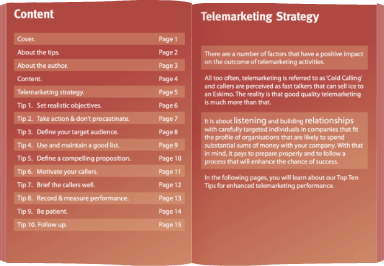For most businesses, lead generation is essential. They require a steady flow of fresh prospects into the business to keep the wheels turning. Few organisations can rely solely on repeat business, referrals, cross-sell, and up-sell to existing customers to provide sufficient revenue and profit, and to grow. Whilst that would be the ideal situation, it’s just not realistic for most companies. But, lead generation comes in different shapes and sizes and is far from straightforward. So, what are the Types of Lead in Lead Generation?
There are several types of leads, each with its own characteristics. What’s more, we can dig deeper to find ‘shades of grey’ when it comes to establishing what’s a good lead, and what’s not. Below, we will delve into the different types of lead and try to provide a bit more detail.
Cold Leads:
One might argue that cold leads aren’t leads at all. These are businesses,and specific roles within those companies, that have shown no previous interest in your product or service. They are unaware of your company and what you offer.
Whilst some lead generators call these leads, we prefer to term this ‘a qualified list’. Yet, in many ways, they aren’t fully qualified. They may meet certain criteria such as location, size, sector, job role and so on, but, at this stage, nothing more has been accomplished. Without awareness, are they really at the top end of the sales funnel? Ultimately, segmentation and profiling are important at this stage, but all you have is a list of targets. Hopefully, that includes:
- The right contact names
- Their email address
- Phone number
- LinkedIn profile
The above can be used as the basis for targeting, taking them, hopefully, from cold to warm.
Check out our data building services
Warm Leads:
How warm is warm? It’s an important question. We’ll deal with hot leads below. Yet, there are also degrees of warmth. That includes the role of the person with whom you’re engaging, their decision-making authority, timing, level of need and so on. Warm leads could include influencers as opposed to decision-makers or actual purchasers.
A relevant individual may have shown some interest in your offerings but may not be ready to make a purchase. They may have engaged with your content or expressed mild interest, such as signing up for a newsletter. Or, as a result of a call, there may be some intelligence regarding end of contract dates, or when a new budget becomes available. Ultimately, what’s crucial here is that, however it’s done, you need to identify where the prospect is at in the buying cycle, and you need to make sure you follow up religiously at the correct time.
Hot Leads:
Hot leads are the holy grail. They have the highest chance of converting, and are usually the highest value to the business. Theoretically, they are highly interested and engaged with your business. They are often close to making a purchase and require timely and targeted follow-up.
Yet, the work is far from done. You may be part of a beauty parade of potential suppliers. This may be a tender. You may be one of 3 providers to have made it to the shortlist. This is the stage when your sales and marketing teams need to do their best work. Every sector, and business, has its own ratio for success from hot lead to conversion. Whatever that is, if you have identified a particular individual or organisation as a hot lead, you’d better make sure that every step is taken to get them over the line.
Different Levels of Lead
Going deeper, and picking up on points made earlier in this blog, there are many different types, and levels, of lead. We will detail some of them below. Each will require a different approach.
- Marketing Qualified Leads (MQLs): These leads have been identified as prospects who are more likely to become customers based on their behaviour and demographics. They have met certain criteria and are passed from marketing to sales for further nurturing. They may have responded to PPC, left their details on a contact form, or attended a relevant event. However, there’s still work to do to sort the tyre-kickers, from those that are genuinely in the market for your products and services.
- Sales Qualified Leads (SQLs): SQLs are leads that the sales team has determined to be more likely to convert into customers. They can also be referred to as BANT leads. They have been qualified through direct communication and are in the final stages of the sales process.
- Inbound Leads: Inbound leads can be either MQL or SQL. Assuming that you can control the quality, to avoid being flooded with poor quality enquiries, inbound leads have a higher likelihood of conversion. And, importantly, depending on what marketing led them to your door, they may cost less than the alternative below. They can arrive through content marketing, SEO, PPC, or other marketing efforts. They show interest by seeking information or solutions related to your industry.
- Outbound Leads: These leads are generated through proactive outreach, such as telemarketing, cold emailing, or direct mail campaigns. They involve reaching out to potential customers who may not have shown initial interest. Whilst they may sometimes cost more, especially in the case of B2B appointment setting, the big advantage is the ability to laser target. In other words, having segmented and profiled your audience, you can reach out directly to more potentially lucrative targets, thereby also reducing wastage.
- Referral Leads: Referral leads come from existing customers or partners who recommend your products or services to others. They often have a higher conversion rate due to the trust associated with referrals. Some companies use incentives to encourage referrals. Others have agreements in place to reward the referral giver with a commission. Ideally, referrals come just from doing great work.
A Variety of Channel Options
Leads can come from a wide variety of channels from online to offline. If you exhibit at events, run webinars or round tables, the leads can be more intimate. Likewise, if telemarketing is used to initiate the relationship, and identify the need. Clearly, organic web enquiries are more likely going to be more robust, but that’s not always the case in our experience. Ad campaigns such as PPC, and LinkedIn sponsored ads and content can generate a mixed bag of leads, and warmth.
Few organisations have an unlimited budget. So, marketing decision-makers need to select the channels that they feel will deliver the best bang for buck. And, it can be a case of trial and effort, unfortunately.
The Lead is not The End of the Story
Ultimately, as mentioned earlier, lead quality varies dramatically. Some leads are weak. Others are blazing hot. While others can be nurtured until they become ready to convert. Therefore, understanding the different types of leads is crucial for tailoring your lead generation strategies and effectively nurturing prospects throughout the sales journey.
And, long-term value is often lurking in your sales pipeline in addition to those leads that are ready to go now. Perhaps inevitably, sales people may choose to focus on the ones that demonstrate the biggest potential right now. Yet, nurturing a robust sales pipeline, or funnel, is often the answer to the requirement for sustainable growth.






